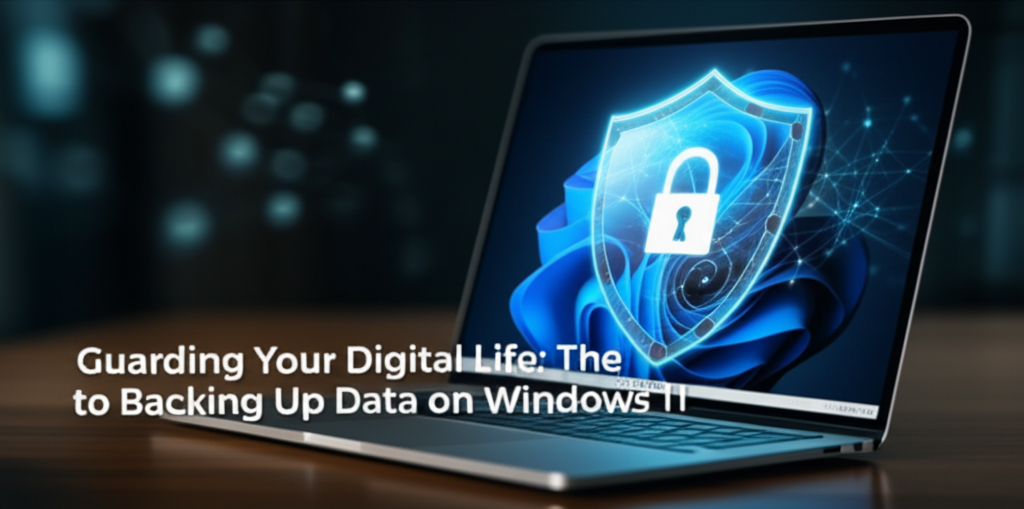In today’s digitally driven world, safeguarding your data is more important than ever. Whether you’re a student, professional, or someone who simply uses a computer for personal tasks, losing your data can be a major setback. Windows 11 brings a host of features designed to make data management easier, but understanding how to effectively back up your data is crucial for maintaining your digital peace of mind.
In this guide, we’ll walk you through the entire process of backing up your data on Windows 11. We understand that it can seem daunting, especially for beginners, but don’t worry! Our step-by-step breakdown will help you tackle this essential task easily.
Why is Backing Up Data Important?
Imagine losing all your important files, photos, or projects due to a system crash, accidental deletion, or malware attack. A reliable backup not only protects your data but also gives you peace of mind. Moreover, with the increasing number of cyber threats, having a backup strategy is more essential than ever. With Windows 11, Microsoft offers several built-in options that simplify the backup process.
Step-by-Step Breakdown to Back Up Data on Windows 11
1. Check Your Storage Options
Before you begin, you need to determine where you want to store your backups. You can use:
- External Hard Drives
- USB Flash Drives
- Cloud Storage Services (e.g., OneDrive, Google Drive)
2. Use File History to Back Up Personal Files
File History is a built-in Windows feature that regularly saves copies of your files.
Step 2.1: Connect Your Backup Drive
- Connect your external drive to your PC.
- Make sure it has enough storage space available.
Step 2.2: Access File History
- Press Windows + I to open Settings.
- Navigate to Update & Security > Backup.
Step 2.3: Set Up File History
- Click on Add a drive and select your connected external drive.
- Once selected, toggle on Automatically back up my files.
Step 2.4: Customize Backup Options
- Click on More options under Back up using File History. Here, you can configure:
- How often to back up (e.g., every hour).
- How long to keep your backups (e.g., forever).
3. Creating a System Image Backup
A system image backup creates an exact copy of your entire system. This includes the operating system, installed programs, system settings, and files.
Step 3.1: Access Backup Settings
- Press Windows + R to open the Run dialog.
- Type
controland hit Enter to open the Control Panel. - Select System and Security > Backup and Restore (Windows 7).
Step 3.2: Create a System Image
- In the left pane, click on Create a system image.
- Choose where to save the backup (on a hard disk, DVD, or network location), then click Next.
- Select drives you want to include and click Next.
- Review your settings and click Start backup.
4. Backing Up Using Third-Party Software
While Windows 11 offers powerful built-in tools, some users prefer third-party backup solutions for additional features.
Popular Third-Party Backup Software:
- Acronis True Image
- EaseUS Todo Backup
- Macrium Reflect
Follow the instructions provided with these programs to back up your data safely.
5. Using Cloud Storage Alternatives
In addition to the built-in solutions, cloud storage platforms can provide additional redundancy.
Using OneDrive
- Open OneDrive from your system tray.
- Log in with your Microsoft account.
- Drag and drop files and folders into it for instant backup.
Using Google Drive
- Go to Google Drive and log in.
- Click the ‘New’ button and select Upload Files or Folder.
- Choose the files you want to back up.
Common Mistakes Beginners Make and How to Avoid Them
- Not Checking Backup Settings: Make sure to periodically check your backup settings to ensure they are functioning correctly.
- Forgetting About External Drives: If using an external hard drive, ensure you connect it regularly or set it up to backup automatically.
- Ignoring Updates: Keep your backup software up to date to ensure effective protection against vulnerabilities.
- Assuming Backups are Permanent: Always verify your backups. Just because a backup was created does not guarantee it is intact.
Alternatives to Built-in Backup Solutions
If Windows 11’s built-in methods don’t suit your needs, consider these alternatives:
-
Third-Party Backup Solutions:
- Acronis True Image: Offers cloud backups and advanced features.
- Paragon Backup & Recovery: Provides flexible recovery options.
- Manual Backup:
- Copy important files to multiple USB drives, external hard drives, or another PC.
Final Checklist
Before concluding, ensure you go through this checklist:
- Have you backed up your personal files using File History?
- Did you create a system image backup?
- Are you utilizing a cloud service like OneDrive or Google Drive?
- Have you verified your backups?
- Are you maintaining a regular backup schedule?
Conclusion
Backing up your data on Windows 11 may seem overwhelming at first, but following this guide can simplify the entire process. Regularly backing up your files and ensuring their security can save you from potential data loss disasters. By using the built-in tools and considering alternatives, you can effectively protect your valuable digital life. Take action today, and give yourself the peace of mind you deserve!

